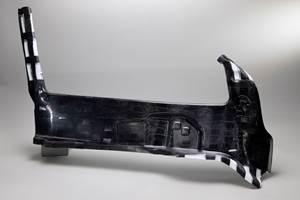Automated towpreg systems provides direct access to wet winding
CAMX 2024: Century Design Inc. highlights its OnDemand towpreg systems, designed to provide differentiation and cost efficiency in-house while maintaining high quality.
Share
Source (All Images) Century Design Inc.
Century Design Inc. (CDI, San Diego, Calif., U.S.) presents its OnDemand towpreg system, a solution for wet winding that is designed to eliminate high costs and supply chain instability.
CDI’s OnDemand towpreg system delivers a comprehensive solution by granting manufacturers direct access to “affordable” high-quality towpreg materials. With full control over material type and properties, this system enables users to bypass traditional suppliers for more consistent material procurement.
The OnDemand towpreg line features a fully automated process, only requiring a single, entry-level operator. Its compact setup, housed within a 10' × 4' footprint, can integrate seamlessly into the customer’s production environmentt, making it ideal for point-of-use application. The automated system also produces finished towpreg materials tailored to users’ specifications for immediate usability for composite part fabrication.
According to the company, one of the standout benefits of this towpreg line is its versatility — it is compatible with a wide range of industry-standard fibers and resins. Manufacturers can select from an array of customer-formulated or off-the-shelf resin systems to meet specific application needs.
“With the OnDemand material lines for parts makers, we’ve addressed the industry’s need for differentiation and cost efficiency,” says CDI’s lead engineer. “Our technology provides manufacturers with high-quality, customizable products while significantly lowering overall production costs.”
Bringing material production in-house can offer substantial benefits for wet winders. By eliminating the need for external suppliers, manufacturers have the ability to gain full control over production schedules, which further enhances efficiency and reduces lead times. This capability also facilitate rapid optimization of material properties and configuration to best suit downstream processing needs.
The modular design of CDI’s towpreg system is engineered to support not only R&D and small-scale production, but also scaling for high-volume production.
Related Content
-
Highly tunable, woven lattice reinforcements target automotive structures
CAMX 2023: Startup Weav3D will be demonstrating its two collaborative automotive demonstrator parts and present two conference papers.
-
CAMX 2025 abstract submission call is open
Submit your technical paper and/or education session abstracts highlighting novel product developments, applications and research by Feb. 7, 2025.
-
LFAM specialization caters to 3D printed composite tooling, molds
CAMX 2025: AES is committed to driving technological advancement and application development in 3D printing, distinguishing its diverse capabilities through several tooling examples.
Related Content
Highly tunable, woven lattice reinforcements target automotive structures
CAMX 2023: Startup Weav3D will be demonstrating its two collaborative automotive demonstrator parts and present two conference papers.
Read MoreCAMX 2025 abstract submission call is open
Submit your technical paper and/or education session abstracts highlighting novel product developments, applications and research by Feb. 7, 2025.
Read MoreLFAM specialization caters to 3D printed composite tooling, molds
CAMX 2025: AES is committed to driving technological advancement and application development in 3D printing, distinguishing its diverse capabilities through several tooling examples.
Read MoreSheryl Connelly confirmed as keynote speaker for CAMX 2025
Connelly will bring her experience as a futurist and global consumer trends expert, equipping CAMX attendees with tools and strategies to navigate the global shifts in composites manufacturing.
Read MoreRead Next
Ultrasonic welding for in-space manufacturing of CFRTP
Agile Ultrasonics and NASA trial robotic-compatible carbon fiber-reinforced thermoplastic ultrasonic welding technology for space structures.
Read MoreCeramic matrix composites: Faster, cheaper, higher temperature
New players proliferate, increasing CMC materials and manufacturing capacity, novel processes and automation to meet demand for higher part volumes and performance.
Read MoreCutting 100 pounds, certification time for the X-59 nose cone
Swift Engineering used HyperX software to remove 100 pounds from 38-foot graphite/epoxy cored nose cone for X-59 supersonic aircraft.
Read More









